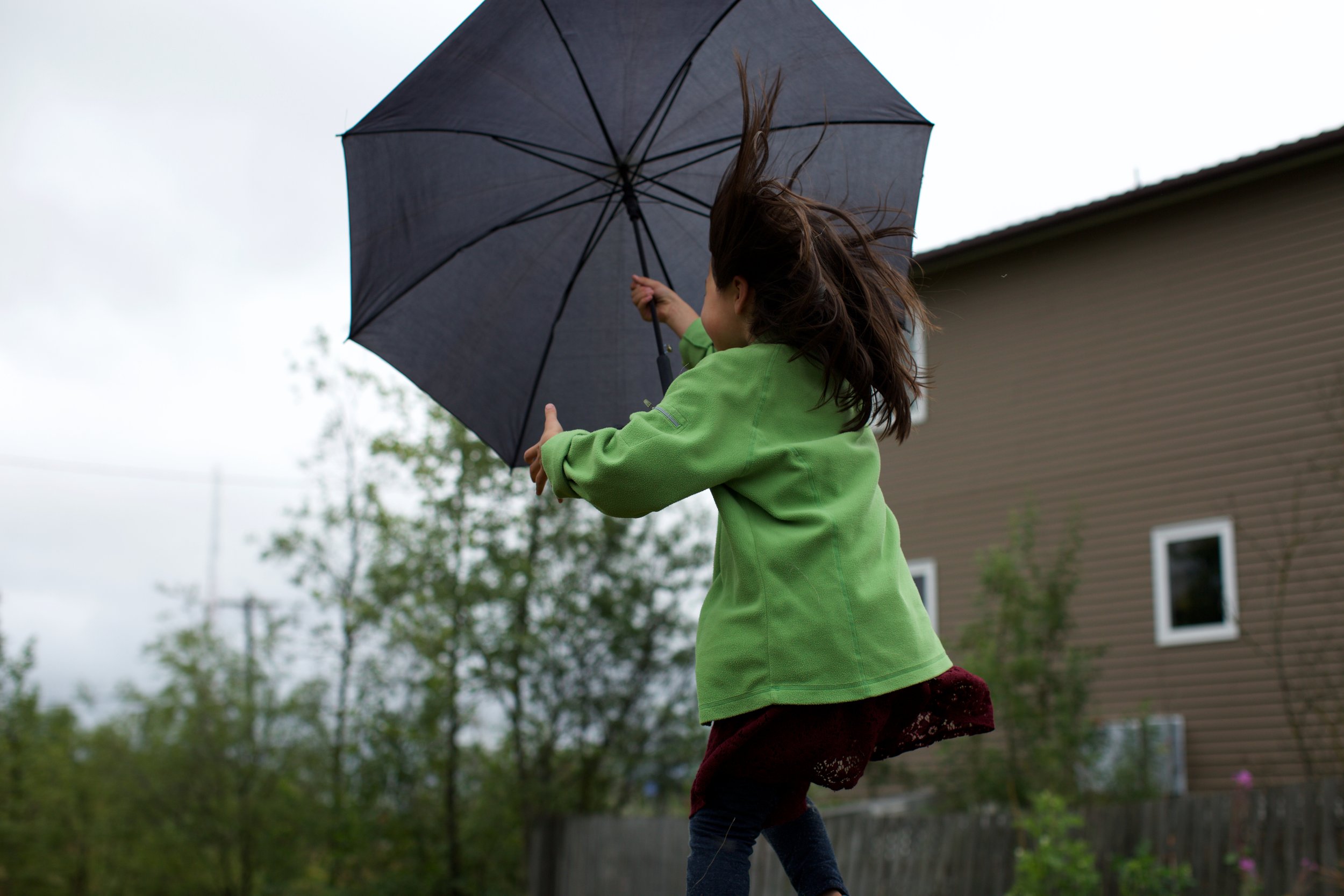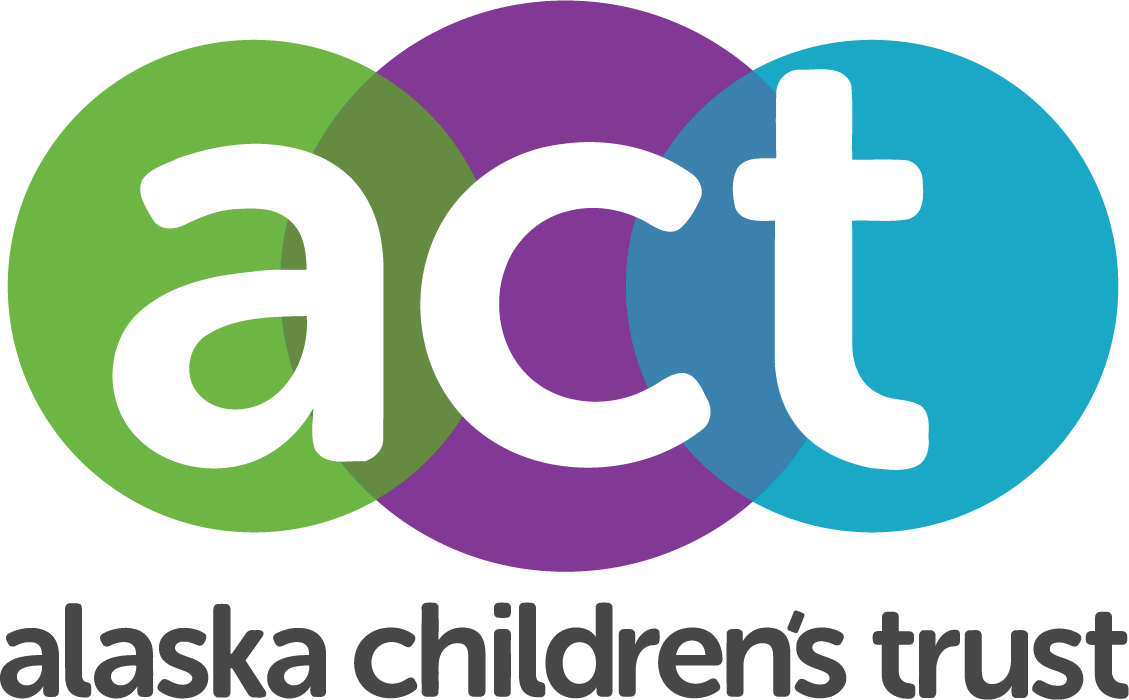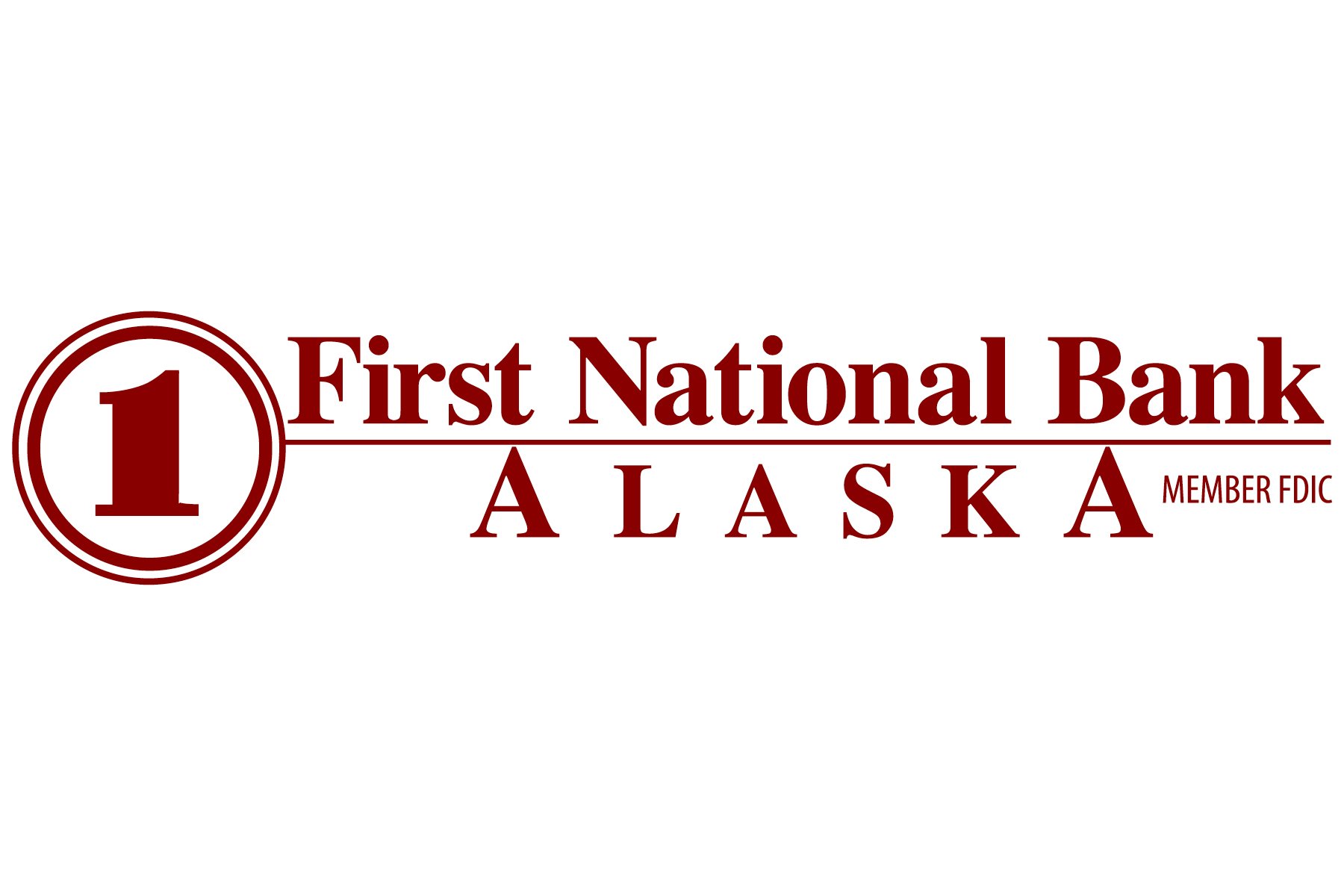
OUR WORK
Child Sexual Abuse Prevention
Child sexual abuse is a difficult topic to talk (or even think) about. No parent wants to consider the idea that their child, or a child they know, could be sexually abused. Unfortunately, in Alaska, child sexual abuse is all too common. But it doesn’t have to be that way. As adults, it is our responsibility to learn about the warning signs and work to protect children.
What is child sexual abuse (CSA)?
Child sexual abuse refers to sexual activity between a child and an adult (or another child) that the child does not fully understand, does not consent to, or is not developmentally prepared for and therefore cannot consent to.
In Alaska, the age of sexual consent is 16. Sexual activity with a child over age 16 is child sexual abuse if the perpetrator occupies a position of authority over the child.
Alaska law states that consent for sexual activity must be freely given, reversible, and positively expressed. This means that both individuals involved in sexual activity must affirmatively express their agreement to engage in sexual activity through their words and/or actions and can take back their consent at any time.
Child sexual abuse does not always involve penetration, force, or pain. Both touching and non-touching behaviors can be considered child sexual abuse. Touching behaviors may include touching a child’s genitals or making a child touch someone else’s genitals. Non-touching behaviors may include showing a child pornography, exposing a person’s genitals to a child, or photographing a child in sexual poses.
Because most abusers are known or trusted by families, CSA often involves grooming.
What is grooming?
Most abusers know their victims, so child sexual abuse often involves a process called grooming. Grooming is when an abuser slowly builds a trusting relationship with a child (and sometimes the child’s family) for the purpose of sexually abusing that child. Abusers will develop an emotional connection with the child and use grooming to make violations of the child’s boundaries seem normal in preparation for abuse.
STAGES OF GROOMING
1- Building trust
Perpetrators attempt to gain the trust of the community so that their inappropriate behaviors will be dismissed or overlooked.
2- Gaining access
Perpetrators often seek to work in environments like schools where they will have access to children.
3- Identifying the vulnerable
Perpetrators often seek out vulnerable children with unmet needs they can “fill.”
4- Isolating the child
Perpetrators seek out opportunities to be alone with a single child away from others.
5- Desensitizing the child to touch
Perpetrators generally start by getting children used to small, seemingly innocent touches like hugs or tickling, then introducing more touch over time.
Make the abuser seem like someone who cares deeply about kids. That way, paying special attention to one child doesn’t seem abnormal.
THE GROOMING ICEBERG
Think of grooming like an iceberg, some of it is visible, but some of it is hidden beneath the surface. As adults, we can monitor or report the visible grooming behaviors we observe to prevent or stop the hidden behaviors that can lead to sexual abuse.
6- Introducing intimacy
Perpetrators slowly move conversations from professional to personal and introduce sexual topics to see how the child will respond.
7- Creating complicity
Perpetrators want to make children think abuse is their fault. They may do this by having the child join them in rule-breaking so that if the child can’t report abuse without exposing their own wrongdoing.
8- Testing the ability to keep secrets
Perpetrators will test whether the child will keep secrets before actually “crossing the line” into abuse.
9- Maintaining silence
Perpetrators may appeal to children’s emotions by saying things like “if you tell, I’ll be in trouble” or issuing threats.
Groomers may use the internet (including the chat feature in video games!) to communicate secretly with kids. Check in regularly with your child to find out who they’re talking to online. Remind them that it’s never appropriate for a teacher, coach, or other adult in a position of authority to be communicating with them privately. You can learn more about keeping your child safe online - and give teens tools to keep themselves safe, too, at on this page of our site.
GROOMING - ADULTS
Abusers groom adults too. Groomers often go out of their way to appear helpful to kids’ families. They may offer to do special things like take a child on a special outing or help out with babysitting. These actions may seem kind and generous, but they are really intended to…
Call out boundary violations whenever you see them, even if the behavior seems innocent. Often, when cases of sexual abuse are later revealed, many adults had witnessed small boundary violations, but didn’t speak up because they didn’t think they were anything to worry about.
Make the abuser seem like someone who goes out of their way to help kids. That way, spending one-on-one time with children doesn’t seem odd.
Limit one-on-one interactions between adults and children. If your child stays over at a friend’s house, ask who will be at home to supervise. If older children will also be present in the home, ask how they will be supervised as well.
Make the abuser seem like someone who is just a naturally “touchy” person. That way, other adults will brush off or ignore rumors of sexual touching.
Ask adults to respect kids’ personal space. Be extra suspicious of any adults who brush off your concerns about inappropriate touching or “downplay” their actions.
How YOU can prevent child sexual abuse
Every Alaskan, parent, educator, or neighbor, can make a difference in the prevention of child abuse and neglect.
1) Assess your child’s activities.
With sports, tutoring, volunteering, and so many other activities, it’s likely your child meets a lot of adults. Before you entrust your child to an organization, ask questions about its prevention policies.
2) Speak out when you see boundary violations.
If you see an adult doing something inappropriate, being overly friendly with children, or violating the professional boundaries their employer has asked them to observe, speak out. You might feel comfortable speaking to the adult yourself or you might want to contact their supervisor or other authority figure. Whatever you do, don’t stay silent. Often, the only signs that an adult could be grooming a child for abuse are small, seemingly innocent boundary violations. By reporting inappropriate behaviors, you can stop grooming before it escalates to sexual abuse.
3) Learn about professional boundaries and speak out when you see violations.
Schools and many other child-serving organizations enforce codes of conduct and policies that tell staff and volunteers how they should behave with children. If you don’t know what those policies are, ask. You have a right to know how adults have been told to interact with your child. You also have a right to report violations when you see them. If you’re unsure how to do that, ask.
4) Supervise groups of children.
Schools and many other child-serving organizations enforce codes of conduct and policies that tell staff and volunteers how they should behave with children. If you don’t know what those policies are, ask. You have a right to know how adults have been told to interact with your child. You also have a right to report violations when you see them. If you’re unsure how to do that, ask.
Talking to Children
Talking with kids early, often, and openly is one of the best ways parents can prevent child sexual abuse. Here are some key things to consider teaching your child as well as concrete ideas of what to say.
TALKING TO YOUNG CHILDREN
2. Talk about giving and receiving consent.
As teenagers begin to develop romantic feelings, it’s important to emphasize that the same body safety rules apply to romantic relationships. Remind your teenager that they should always ask for and receive consent before touching someone else and that they should expect the same.
3. Teach kids to recognize when they feel uncomfortable.
As soon as your child starts talking, start teaching them words to describe emotions. Because sexual abuse is often perpetrated by loved ones, it can leave kids with complicated feelings. Teach words like confused, mixed up, and unsure as well as the basics like happy, sad, and mad. Remind them to talk to you whenever someone makes them feel these things.
3. Ask your teen to tell a trusted adult if they’re worried about something.
As kids get older, they may feel embarrassed asking their parents for advice. You can help your teenager identify other trusted adults in their life, like an auntie or uncle, who they feel comfortable asking “awkward” questions.
1. Teach kids names for all body parts. Teach that some body parts are private.
As soon as your child starts talking, start teaching them the correct names for their body parts. This helps kids learn that they shouldn’t feel ashamed to talk about their bodies. Tell your child that no adult or child should be looking at or touching the parts of their body covered by their swimsuit.
2. Teach kids that adults should never ask them to keep secrets.
Tell your child that no adult should ever ask them to hide something from others. That’s especially true when it comes to touching, spending time together, and communicating privately. Some “tricky people” might ask kids to keep these things a secret, but this is a red flag that shows that person can’t be trusted.
4. Go over safety rules before activities.
When your child is getting ready to go somewhere, like a friend’s house or field trip, remind them of their personal body safety rules. Help them identify a trusted adult they will talk to if something doesn’t seem right.
TALKING TO OLDER CHILDREN
1. Ask open-ended questions.
Many of the same safety rules apply to older children, but you may need to frame your conversations differently. Rather than simply giving advice, ask your older child open-ended questions that encourage conversation.
4. Talk to your teen about how they can support their friends.
Many kids tell a peer about child sexual abuse rather than talking to an adult. Tell your teenager that if a friend ever tells them about abuse or mentions behavior by an adult that may be a boundary violation, they should tell an adult right away – even if their friend asked them to keep it a secret.
Responding to a Disclosure
Learning that a child has been sexually abused can be extremely painful and you may have a strong internal reaction. However, it’s important to respond calmly.
Follow these simple steps:
1) Believe the child. One of the main reasons children don’t report abuse is the fear of not being believed.
2) Reassure the child that telling you was the right thing to do and that they did nothing wrong.
3) Evaluate the situation. Determine if the child is in immediate danger and, if so, contact the police. Do your best not to overreact – it could frighten the child or lead them to believe they did something wrong.
4) Collect enough information to make a report, but don’t push for details or ask leading questions. Let the child guide the conversation. Don’t investigate the allegation yourself – leave it to the professionals.
5) Report the abuse. You have a duty to report abuse to keep kids safe. Don’t promise the child you will keep what they told you a secret. Adults must take action to protect kids.
HOW TO REPORT
Report Child Sexual Abuse to OCS and Law Enforcement
All adults should report suspected child sexual abuse to the Office of Children’s Services and the law enforcement agency assigned to the area where the abuse took place.
1) Begin by calling the Child Abuse Hotline: 1-800-478-4444
2) Then call local law enforcement
FINDING HELP
Connecting Alaskans Experiencing or Healing from a Crisis
STAR (Standing Together Against Rape) offers a 24-hour, free, confidential crisis line. Call 1-800-478-8999.
The StrongHearts Native Helpline offers a 24-hour free, confidential helpline for Native Americans and Alaska Natives dealing with domestic and sexual violence. Call 1-844-762-8483 or use the chat feature on www.strongheartshelpline.org.
Find a Child Advocacy Center in your area of Alaska here. Child Advocacy Centers are places where children can receive services like a child-friendly interview, medical evaluation, referrals for therapy, and support to help the family following a report of abuse.
Did you know?
16%
In Alaska, 16% of adults report having experienced child sexual abuse.
1 in 4
Nationwide, 1 in 4 girls will be sexually abused at some point during childhood.
1 in 13
Nationwide, 1 in 13 boys will be sexually abused at some point during childhood.
Over 1/3
It is estimated that over 1/3 of child sexual abuse offenders are children themselves.
91%
Most victims know their abusers. In over 91% of child sexual abuse cases, the abuser is known and trusted by the child or their family.
38%
of child survivors will disclose the fact that they have been sexually abused, meaning 62% of survivors never disclose.
Pathway to Hope (PTH)
Pathway to Hope is an Alaska Native framework for community-led prevention of child sexual abuse that also informs the development of tools to heal. Initially developed in 2004 by Alaska Native leaders, in conjunction with Diane Payne at the Tribal Law and Policy Institute, PTH helps communities break the silence surrounding child sexual abuse, promote healing for survivors, and prevent future abuse. Pathway to Hope trains Community Facilitators, who implement the program in their own communities, to give each community ownership of its own journey towards healing and thriving. While staying flexible to meet the unique needs and readiness of each community, PTH helps communities explore the impact of historical trauma on the safety of children today, understand child sexual abuse in Alaska, recognize the barriers preventing communities from acknowledging and addressing it, and, ultimately, design and implement strategies to prevent child sexual abuse and promote healing.
Thank you to our Pathway to Hope sponsors
You make our work to prevent child sexual abuse possible. We are so appreciative of what you do for Alaska’s children and our future generations.





















